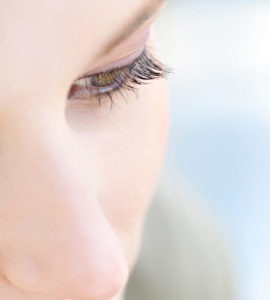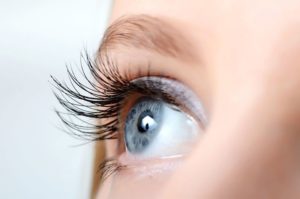 Eyelid surgery, or blepharoplasty, is a sought-after procedure for enhancing both the appearance and functionality of the eyelids. It’s often performed by an oculoplastic surgeon, a specialist trained in surgeries around the eyes. For those suffering from dry eyes, this condition can bring about challenges that must be carefully managed. Dry eyes occur when your eyes don’t produce enough tears or when the tears evaporate too quickly, leading to irritation, redness, and discomfort. These symptoms can be particularly problematic when considering any surgical intervention around the eyes. Consulting with an oculoplastic surgeon is crucial for evaluating whether eyelid surgery is a viable option for individuals with dry eyes. This professional can provide insight into how your specific condition may impact the surgery and what precautions need to be taken. Additionally, understanding the connection between dry eyes and potential surgical outcomes helps in planning the procedure more effectively. Khan Eyelid and Facial Aesthetics, led by oculoplastic and reconstructive surgeon Dr. Tanya Khan, provides eyelid surgery to patients in Plano, Dallas, Austin, Texas, and surrounding locations.
Eyelid surgery, or blepharoplasty, is a sought-after procedure for enhancing both the appearance and functionality of the eyelids. It’s often performed by an oculoplastic surgeon, a specialist trained in surgeries around the eyes. For those suffering from dry eyes, this condition can bring about challenges that must be carefully managed. Dry eyes occur when your eyes don’t produce enough tears or when the tears evaporate too quickly, leading to irritation, redness, and discomfort. These symptoms can be particularly problematic when considering any surgical intervention around the eyes. Consulting with an oculoplastic surgeon is crucial for evaluating whether eyelid surgery is a viable option for individuals with dry eyes. This professional can provide insight into how your specific condition may impact the surgery and what precautions need to be taken. Additionally, understanding the connection between dry eyes and potential surgical outcomes helps in planning the procedure more effectively. Khan Eyelid and Facial Aesthetics, led by oculoplastic and reconstructive surgeon Dr. Tanya Khan, provides eyelid surgery to patients in Plano, Dallas, Austin, Texas, and surrounding locations.
Assessing Eligibility for Eyelid Surgery
The oculoplastic surgeon will begin with a detailed evaluation, considering the severity of your dry eyes and overall eye health. This process typically includes a comprehensive eye exam to determine the extent of your dry eye condition. The surgeon will look into your medical history, noting any previous treatments for dry eyes, such as artificial tears or prescription medications. Understanding your treatment history helps the surgeon assess how well your dry eyes are currently managed and whether additional measures are needed before surgery.
Your specific goals for the surgery are also a significant factor. Whether you’re seeking to improve eyelid appearance, functionality, or both, these objectives will guide the surgeon in planning the procedure. The surgeon will discuss potential modifications to standard surgical techniques to accommodate your dry eyes, ensuring that any approach minimizes the risk of exacerbating your condition.
Age and general health are other critical aspects of the evaluation. Older adults may have different surgical outcomes compared to younger individuals, especially if dry eyes are more severe. The surgeon will also review any other eye conditions you may have, such as blepharitis or meibomian gland dysfunction, which could influence the surgical plan.
To gain a full picture, additional tests may be conducted. These could include tear film break-up time (TBUT) tests, Schirmer tests, or ocular surface staining. Such tests help pinpoint the root cause of your dry eyes, allowing for a more tailored surgical approach.
Your lifestyle and daily activities will also come under scrutiny. The surgeon will consider how your work, hobbies, and other routines might affect both the surgery and your recovery. Adjustments may be recommended to optimize outcomes and ensure that your dry eyes remain manageable throughout the surgical process and beyond.
Eyelid Surgery Risks for Individuals with Dry Eyes
Individuals with dry eyes need to be aware of several risks associated with eyelid surgery. One significant concern is the potential for heightened dry eye symptoms following the procedure. This could lead to increased irritation, redness, and a prolonged recovery period. Another risk includes the development of lagophthalmos, a condition where the eyelids cannot close completely, which can further aggravate dry eye symptoms. The risk of infection and scarring also needs to be considered, as these complications can affect overall eye health and comfort. Additionally, changes in eyelid position post-surgery might impact tear distribution and worsen dry eye conditions. Thoroughly discussing these potential risks with your oculoplastic surgeon is essential to understanding how they may affect you and to develop strategies for minimizing them.
Preparations and Precautions Before Surgery
Managing dry eyes effectively before undergoing eyelid surgery is vital to ensure the best possible outcomes. Your oculoplastic surgeon might recommend various treatments to stabilize your condition and prepare your eyes for the procedure. Common recommendations include increasing the frequency of artificial tears, particularly preservative-free options, to keep your eyes well-lubricated. Warm compresses can help improve the function of your meibomian glands, enhancing the quality of your tears and reducing discomfort. Your surgeon may also prescribe medicated eye drops or ointments to address any underlying inflammation or infection contributing to your dry eyes.
In addition to these treatments, lifestyle adjustments can play a significant role in preparing for surgery. Hydration is crucial; drinking plenty of water can support overall tear production. Your diet may also be a focus, with an emphasis on omega-3 fatty acids, found in fish and flaxseed, which have been shown to support eye health. Limiting screen time and taking frequent breaks from digital devices can reduce strain on your eyes, helping to alleviate dry eye symptoms.
Environmental factors should also be addressed. Using a humidifier in your home can add moisture to the air, preventing your eyes from drying out. Avoiding smoke, wind, and air conditioning can minimize additional irritation. Protective eyewear, such as wraparound sunglasses, can shield your eyes from environmental stressors when outdoors.
During your consultation, your surgeon will review your current medications and may advise on temporary adjustments. Certain medications can exacerbate dry eye symptoms, and alternatives may be considered in the lead-up to your surgery. Additionally, if you wear contact lenses, you may be advised to switch to glasses for a period before and after the procedure to give your eyes a break and reduce the risk of irritation.
Thorough communication with your oculoplastic surgeon is essential. They will provide detailed instructions tailored to your condition and surgical plan, ensuring you are well-prepared. By carefully following these recommendations, you can enhance your eye comfort and support a smoother surgical experience.
Managing Dry Eyes After Surgery
Following eyelid surgery, it’s imperative to prioritize the care of your dry eyes to support recovery and achieve the best possible outcomes. The use of lubricating eye drops will be a cornerstone of your post-operative care. These drops will help maintain moisture and minimize irritation, which can be particularly pronounced during the healing phase.
In addition to eye drops, your surgeon might recommend other soothing treatments such as warm compresses or eyelid massages to enhance tear film quality. These measures can improve gland function and provide relief from any discomfort associated with dry eyes post-surgery.
Keeping the eye area clean is also vital to prevent infection and promote healing. Your surgeon will give you specific instructions on how to gently clean your eyelids and the surrounding area. Avoid using any harsh chemicals or products that could exacerbate dryness or irritation.
Sleeping with your head elevated on an extra pillow can help reduce swelling and aid in faster recovery. It’s also wise to use a humidifier in your bedroom to add moisture to the air, thus preventing your eyes from drying out during sleep.
Protecting your eyes from environmental factors is equally important. Wearing wraparound sunglasses when you’re outdoors can shield your eyes from wind, dust, and sunlight, all of which can contribute to dryness and irritation. If you live in a particularly dry or windy climate, additional protective measures might be needed.
Your surgeon may also advise you to avoid certain activities that can strain your eyes, such as prolonged screen time or reading. Taking regular breaks and using artificial tears can help mitigate the impact of these activities on your dry eyes.
It’s important to follow any medication regimen prescribed by your surgeon. Anti-inflammatory eye drops or ointments may be recommended to reduce swelling and discomfort. Ensure you take these medications as directed to support optimal healing.
Finally, maintaining open communication with your surgeon through follow-up appointments is crucial. These visits allow your surgeon to monitor your recovery, adjust your treatment plan as needed, and address any concerns you may have, ensuring your eyes remain as comfortable as possible throughout the healing process.
Alternative Remedies for Dry Eyes
For those looking for options beyond eyelid surgery, there are several effective remedies to manage dry eyes. Non-surgical interventions like punctal plugs can be quite beneficial. These tiny devices are inserted into the tear ducts to help retain moisture on the eye’s surface, reducing symptoms of dryness.
Nutritional supplements, particularly omega-3 fatty acids found in fish oil or flaxseed, can also support eye health. Some studies suggest that these supplements may improve the quality of tears and reduce inflammation, providing relief from dry eye symptoms.
Making lifestyle adjustments can further help manage dry eyes. Increasing the humidity in your living environment, for instance, can prevent your eyes from drying out. This can be easily achieved by using a humidifier, especially during the colder months when indoor air tends to be drier.
Limiting screen time and taking frequent breaks when using digital devices are other practical steps. The 20-20-20 rule is often recommended: every 20 minutes, take a 20-second break to look at something 20 feet away. This can help reduce eye strain and maintain moisture on the eye’s surface.
Over-the-counter artificial tears can also provide immediate relief. Opt for preservative-free versions to minimize irritation. Additionally, warm compresses and eyelid massages can improve the function of the meibomian glands, which play a crucial role in tear production.
Protecting your eyes from environmental factors is equally important. Wearing wraparound sunglasses can shield your eyes from wind, dust, and sunlight, all of which can exacerbate dry eye symptoms.
Finally, consult your oculoplastic surgeon for personalized advice. They can recommend the best combination of treatments to manage your condition effectively.
CONTACT Khan Eyelid and Facial Aesthetics AND OCULOPLASTIC & RECONSTRUCTIVE SURGEON DR. TANYA KHAN TODAY TO SCHEDULE AN APPOINTMENT
For more information about procedures and treatments at Khan Eyelid and Facial Aesthetics by Ophthalmic surgeon Dr. Tanya Khan. Click here to contact us.
Taking patients from in and around Dallas, Plano, Fort Worth, Grapevine, Garland, Mesquite, Carrollton, Irving, Frisco, Texas and more.










Schedule a Consultation: 972-EYE-LIDS (393-5437)